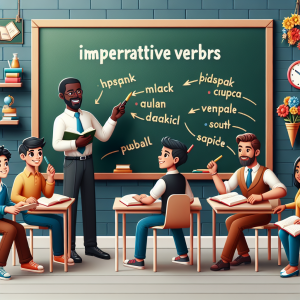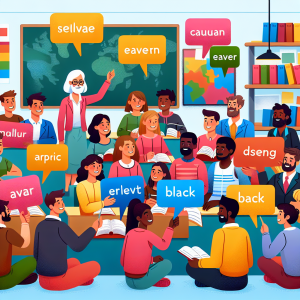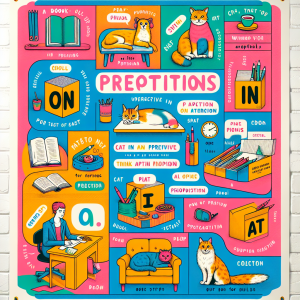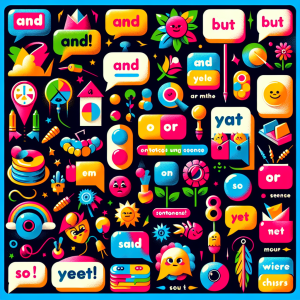Imperative Verbs

Imperative verbs are action words used to give commands, instructions, or requests. They are direct and forceful, often addressing the reader or listener directly. Unlike other verbs, imperatives typically do not have a subject because the subject is implied to be “you.” For example, in the command “Close the door,” the subject “you” is understood, making “close” the imperative verb.
Imperative verbs are essential in various contexts, such as giving directions (“Turn left at the corner”), providing instructions (“Mix the ingredients thoroughly”), making requests (“Please pass the salt”), or issuing warnings (“Watch out!”). They can also be used to offer invitations (“Come to the party”) or encouragement (“Keep going”).
In writing, imperative verbs help create a sense of urgency or importance, making them powerful tools for engaging the audience and prompting immediate action. They are a fundamental aspect of clear and effective communication.
Powerful Verbs
Adding powerful verbs to your writing is crucial because it makes your text more engaging and precise. Powerful verbs bring your sentences to life, painting clear pictures in the reader’s mind. Instead of saying “She walked slowly,” saying “She trudged” gives a stronger image of how she moved. This not only makes your writing more vivid but also more concise, reducing the need for extra words.
Powerful verbs also convey emotions and actions more effectively. For example, “He shouted” is more intense than “He said loudly.” By choosing the right verbs, you can show the reader exactly what you mean without needing lots of descriptions. This helps keep your writing dynamic and interesting.
Learning to use powerful verbs will improve your storytelling and communication skills. It makes your writing more memorable and impactful, whether you’re writing a story, an essay, or a report. So, always look for strong, specific verbs to enhance your writing.
Spare

A verb is a word that expresses an action, occurrence, or state of being in a sentence. It’s like the engine that drives the sentence forward. Verbs show what someone or something does (e.g., “run,” “jump”), what happens (e.g., “rain,” “grow”), or describe a state of being (e.g., “is,” “was”). They are essential for conveying actions, events, or conditions in communication. Verbs can also indicate tense, showing when an action occurs (e.g., present, past, future). In essence, verbs are the action words that give life and movement to sentences, allowing us to express a wide range of thoughts, feelings, and experiences.
Spare

An adjective is a word that describes or modifies a noun or pronoun by providing more information about its qualities or characteristics. Adjectives add color, detail, and precision to language, helping to create vivid and nuanced descriptions. They answer questions like “What kind?” “Which one?” or “How many?” Adjectives benefit learning English by enabling learners to express themselves more precisely and vividly. They enhance vocabulary, encouraging the use of descriptive language. Mastering adjectives enhances writing and speaking skills, allowing learners to paint a clearer picture and evoke stronger emotions. Understanding adjectives fosters effective communication and fosters appreciation for the richness of language.
Spare

An adverb is a word that modifies a verb, adjective, or another adverb, providing information about how, when, where, or to what extent something happens. Adverbs add depth and clarity to language, enhancing the precision and expressiveness of communication. They answer questions like “How?” “When?” “Where?” or “To what degree?” Adverbs benefit learning English by enabling learners to convey a wide range of meanings and nuances in their writing and speech. They help to refine and expand vocabulary, encouraging learners to express themselves with greater specificity and accuracy. Mastering adverbs fosters clearer communication and enhances overall language proficiency.
Spare

A preposition is a word that shows the relationship between a noun or pronoun and other words in a sentence. Prepositions indicate location, direction, time, or the relationship between two elements in a sentence. Common prepositions include “in,” “on,” “at,” “above,” “below,” “beside,” and “between.” Prepositions benefit learning English by providing clarity in expressing spatial and temporal relationships. Understanding prepositions enhances comprehension of sentence structure and improves communication skills. By mastering prepositions, learners can convey precise information about the placement or timing of events, leading to more effective and accurate expression in both spoken and written English.
Spare

A conjunction is a word that connects words, phrases, or clauses in a sentence, allowing for smoother and more coherent communication. Common conjunctions include “and,” “but,” “or,” “so,” “for,” and “yet.” Conjunctions benefit learning English by facilitating the formation of complex sentences and expressing relationships between different ideas or elements. They help learners construct compound and complex sentences, enabling them to convey more nuanced thoughts and connect related concepts. By mastering conjunctions, learners can improve their ability to organize ideas logically, leading to clearer and more structured writing and speech in English.
Spare

An interjection is a word or phrase used to express strong emotions or sudden feelings in a sentence. Examples include “wow,” “ouch,” “hey,” and “oh.” Interjections benefit learning English by adding emotion, emphasis, and authenticity to language. They allow speakers to convey feelings such as surprise, excitement, or pain more effectively, making communication more engaging and expressive. By incorporating interjections, learners can enhance their understanding of tone and context in English conversations and texts. Mastering interjections also encourages creativity and spontaneity in language use, fostering a deeper connection to the language and its cultural nuances.
